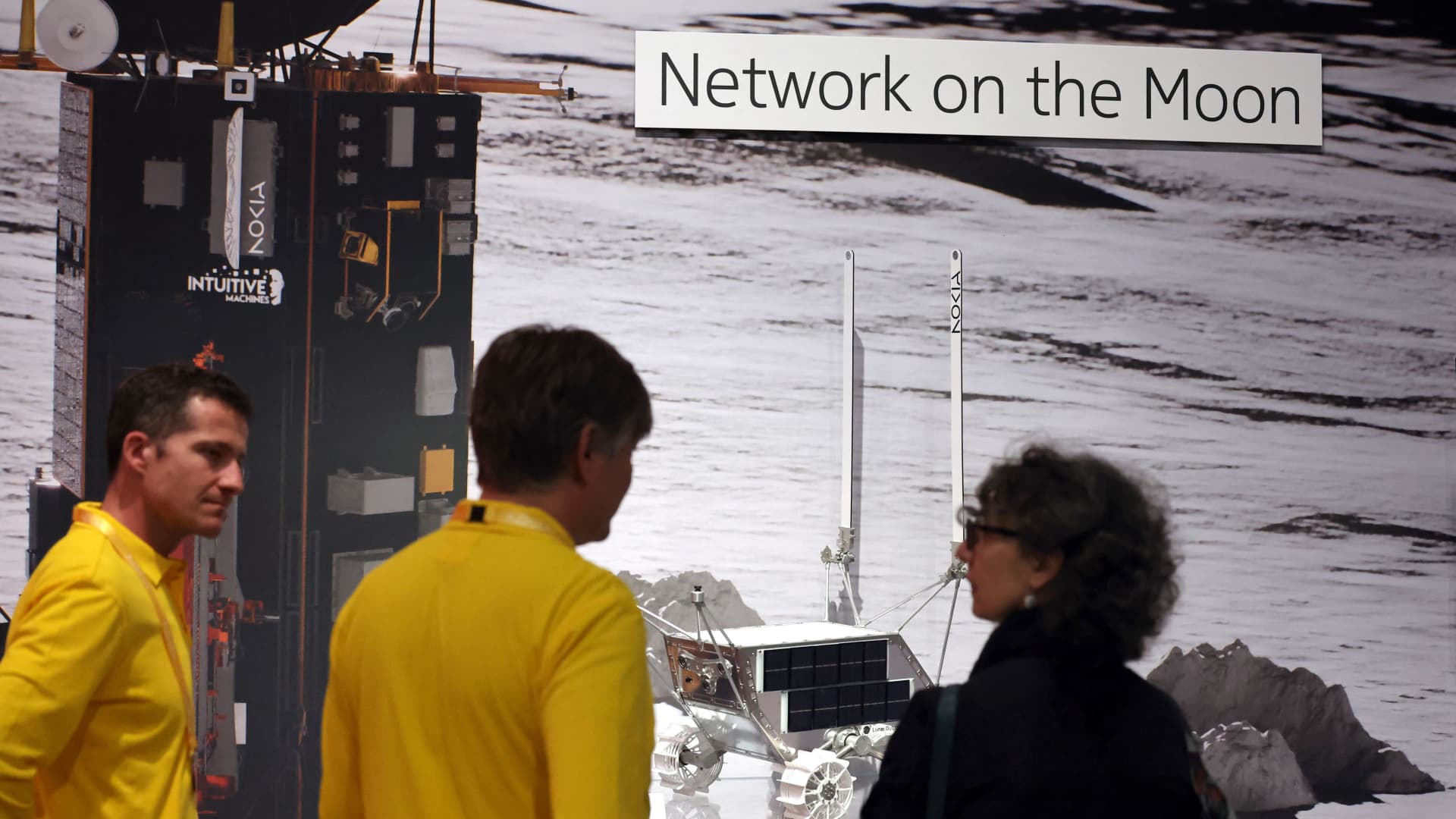
Nokia hopes to install a data network on the moon sometime in 2023, an executive told reporters.
Thomas Coex | AFP via Getty Images

Nokia hopes to install a data network on the moon sometime in 2023, an executive told reporters.
Thomas Coex | AFP via Getty Images
The network will be powered by an antenna-equipped base station stored in a Nova-C lunar lander designed by U.S. space firm Intuitive Machines, as well as by an accompanying solar-powered rover.
An LTE connection will be established between the lander and the rover.
The infrastructure will land on the Shackleton crater, which lies along the southern limb of the moon.
Nokia says the technology is designed to withstand the extreme conditions of space.
The network will be used within Nasa’s Artemis 1 mission, which aims to send the first human astronauts to walk on the moon’s surface since 1972.
The aim is to show that terrestrial networks can meet the communications needs for future space missions, Nokia said, adding that its network will allow astronauts to communicate with each other and with mission control, as well as to control the rover remotely and stream real-time video and telemetry data back to Earth.
The lander will launch via a SpaceX rocket, according to Maestro Ruiz De Temino. He explained that the rocket won’t take the lander all the way to the moon’s surface — it has a propulsion system in place to complete the journey.
Anshel Sag, principal analyst at Moor Insights & Strategy, said that 2023 was an “optimistic target” for the launch of Nokia’s equipment.
“If the hardware is ready and validated as it seems to be, there is a good chance they could launch in 2023 as long as their launch partner of choice doesn’t have any setbacks or delays,” Sag told CNBC via email.
Nokia previously said that its lunar network will “provide critical communication capabilities for many different data transmission applications, including vital command and control functions, remote control of lunar rovers, real-time navigation and streaming of high definition video.”
One of the things Nokia is hoping to achieve with its lunar network is finding ice on the moon. Much of the moon’s surface is now dry, but recent unmanned missions to the moon have yielded discoveries of ice remnants trapped in sheltered craters around the poles.
Such water could be treated and used for drinking, broken up into hydrogen and oxygen for use as rocket fuel, or separated to provide breathable oxygen to astronauts.
“I could see this being used by future expeditions to continue to explore the moon since this really seems like a major test of the capabilities before starting to use it commercially for additional exploration and potential future mining operations,” Sag told CNBC.
“Mining requires a lot of infrastructure to be in place and having the right data about where certain resources are located.
We’ll need more than just internet connectivity, if we’re ever to live on the moon. Engineering giant Rolls-Royce, for example, is working on a nuclear reactor to provide power to future lunar inhabitants and explorers.
WATCH: Three decades after inventing the web, Tim Bernersr-Lee has some ideas on how to fix it